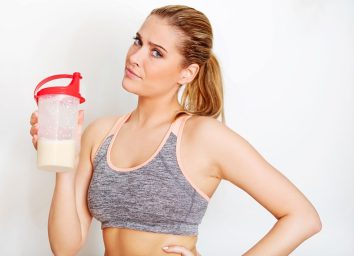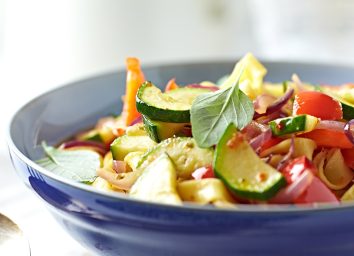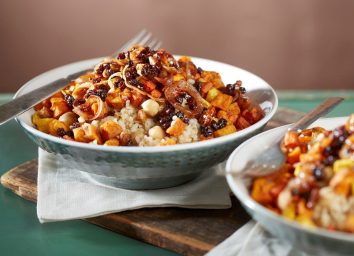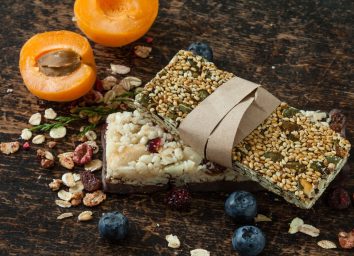15 Easy Ways to Transition to a More Plant-Based Diet
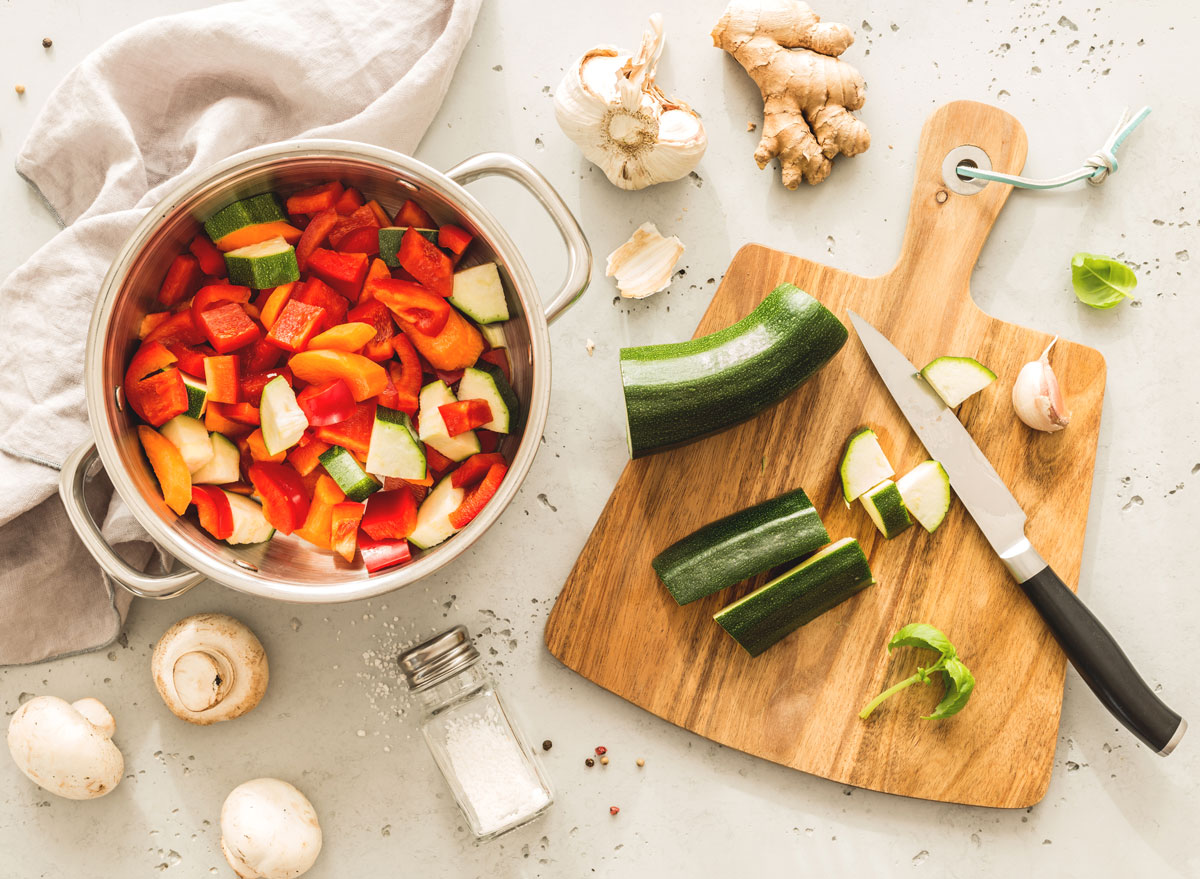
Plant-based diets are trendier than ever before. Everyone from your favorite celebrities to your co-workers are eating less meat, dairy, and eggs—or giving it up completely to become vegetarian or vegan. That change isn't just beneficial for your own health; it also makes a huge difference in helping the planet and the animals. But while it may seem like everyone is doing it, when it comes to how to start a plant-based diet, you may be lost.
Have no fear, we've consulted dietary experts to ease your transition to a whole-food, plant-based lifestyle. But before we get to the tips for how, let's first discuss the reasons why you may want to go plant-based.
There are countless health benefits of transitioning to a plant-based, vegetarian diet.
There have been multiple studies over the years that have shown just how much eating a plant-based diet can better your overall health. Think about it: When you're filling your plate with mostly plants and few to no animal products, how can it not?
"Plant-based diets are associated with numerous health benefits including—but not limited to—lowering BMI and decreasing obesity risk, reducing the risk of (and possibly even reversing) the effects of chronic diseases such as diabetes, cardiovascular disease, and specific types of cancers, such as gastrointestinal cancer," says Whitney English, MS, RDN, of Plant-Based Juniors. "Plant-based diets may also help decrease blood pressure, cholesterol, HbA1C (a marker of diabetes), and blood sugar levels."
While those health benefits are all impressive, one of the biggest draws for people is the diet's ability to help with weight loss. Especially since it's something you can stick with long-term opposed to fad diets like keto or low-carb.
"Research shows regularly eating staples of a plant-based diet, such as pulses, can help with weight loss. In one study in The American Journal of Clinical Nutrition, researchers found eating pulses like chickpeas, white beans, and lentils daily can lead to a weight loss of close to a pound in about six weeks," says Amy Gorin, MS, RDN, owner of Amy Gorin Nutrition in the New York City area.
"Research aside, all the foods a plant-based diet is centered around—including vegetables, fruits, nuts, seeds, and pulses—are bursting with health-helping vitamins, minerals, antioxidants, and fiber that are helpful for good health," Gorin adds.
Becoming a vegetarian or starting a plant-based diet can also benefit the planet.
Aside from benefiting your own health, going more plant-based can also help save the planet. Not only does meat require much more water and energy to produce than plants, but meat is also one of the biggest producers of greenhouse gas emissions contributing to global warming. In fact, a team of 30 world-renowned scientists recently published a report that determined the healthiest diet for people and the planet is plant-based.
Cutting back on meat and dairy is also saving animals and making the world a kinder place. The meat and dairy industry both have cruel practices involved in getting products from farm to plate, including keeping the animals in overcrowded factory farms their entire lives where there's little to no room to move around and engage in their natural behaviors, then making them endure terrifying and painful deaths at the slaughterhouse.
How to start a plant-based diet.
By starting a plant-based diet, you'll do you and the world good. Here are some expert-approved tips for how to start a plant-based diet.
Try 'Meatless Monday'
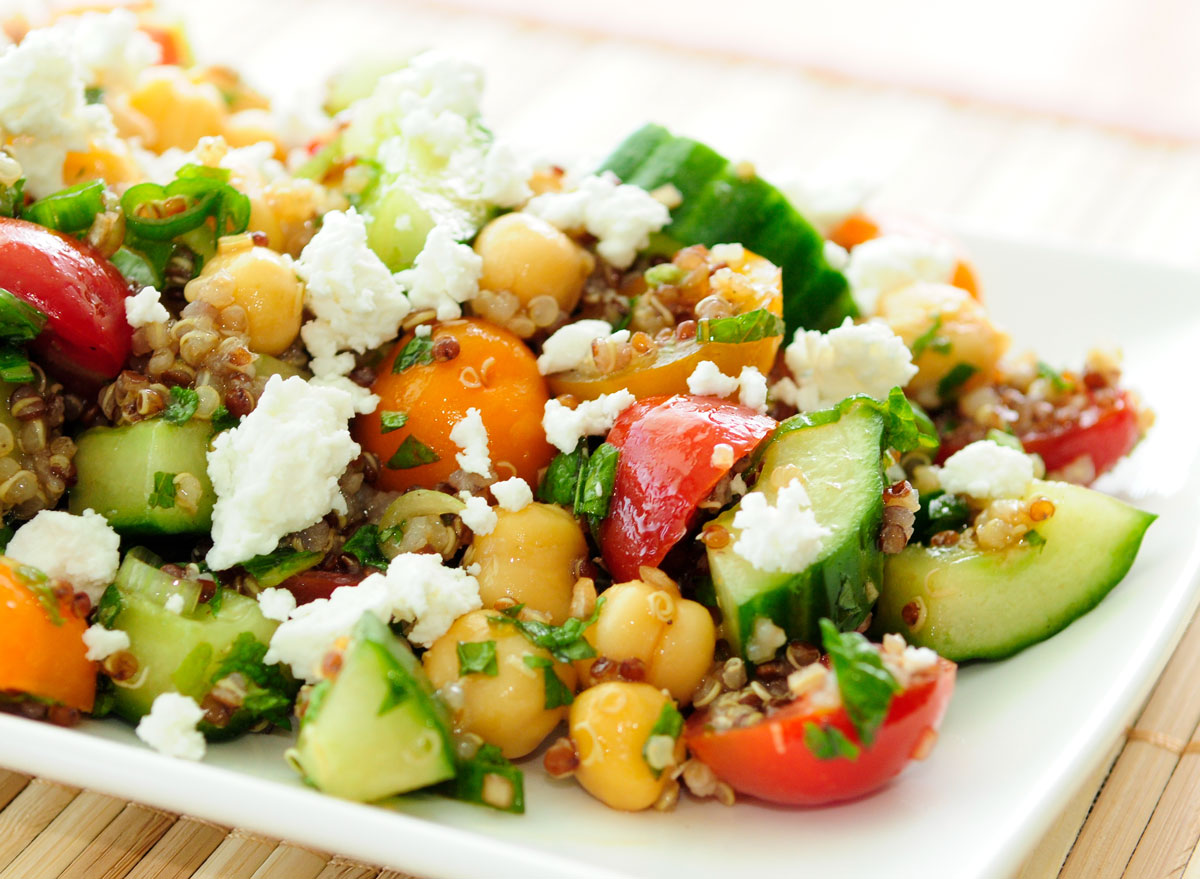
One of the easiest ways to transition into a plant-based diet is to take part in Meatless Mondays: a designated day of the week that you vow to ditch animal protein and stick with plants instead. Not only does it allow you to experiment with vegetarian and vegan dishes, but it also allows your body to adjust to taking in extra fiber.
"Meatless Monday lets you get into the habit of making these meals and become more comfortable with the preparation methods of plant proteins," Gorin says. "The beauty of many plant proteins is that many of them have quite a long shelf life, so you actually might end up with more flexibility in planning your meals. And if you're not used to eating a healthy amount of fiber, it's best to ease in slowly anyway: Gradually increasing fiber sources—such as beans, fruits, and vegetables—can decrease the risk of symptoms like bloating."
Gorin says if you begin with one Meatless Monday meal a week, consider upping that to an entire day. Then add a few more plant-based meals a week until you've reached a full plant-based status.
Swap out dairy for non-dairy products
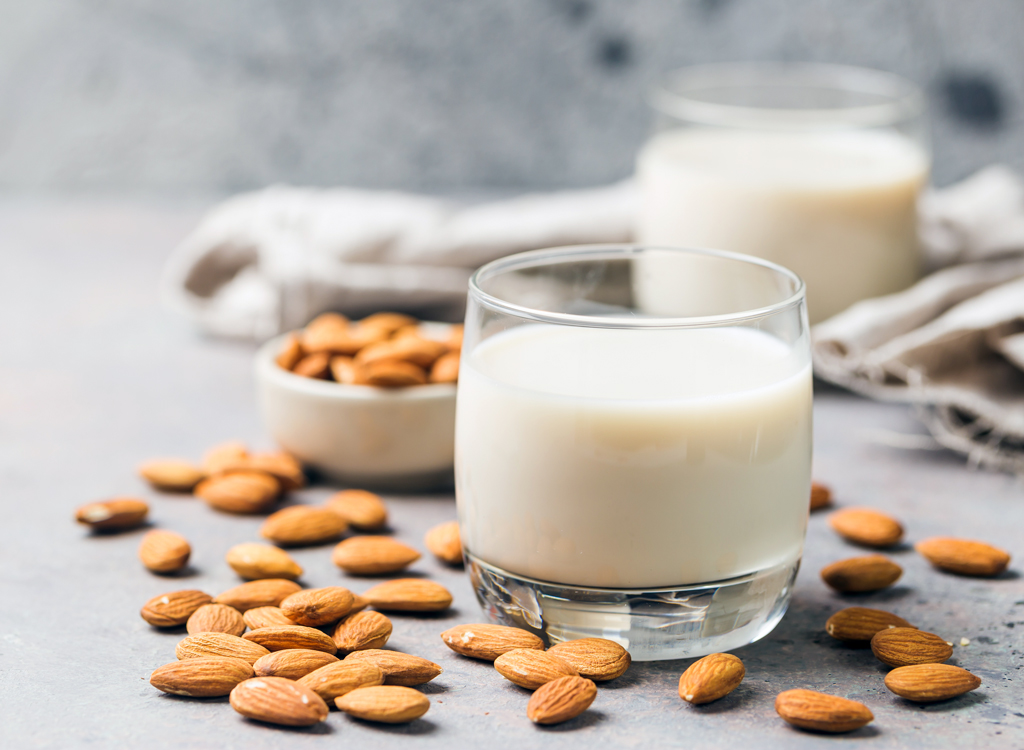
It might seem hard to give up dairy: cheese is included in that category, after all. Once you do start to cut back, you could see your skin start to clear up, decrease your risk of multiple types of cancer, up your bone health, and become the proud owner of a healthier heart, says the Physicians Committee for Responsible Medicine. The easiest way to begin is by replacing every dairy product in your fridge with a non-dairy version as soon as it runs out.
Instead of cow's milk, grab almond, soy, or one of the dozens of other plant-based milk alternatives available, experiment with non-dairy yogurt, get a nut milk-based coffee creamer, and find your favorite vegan cheese. "Trying non-dairy alternatives can be a great first-step because they offer a very similar mouthfeel and taste as their dairy counterparts," English says. There's multiple options for every type, and you can experiment until you find one you love.
Instead of giving things up, remake old favorites with plants
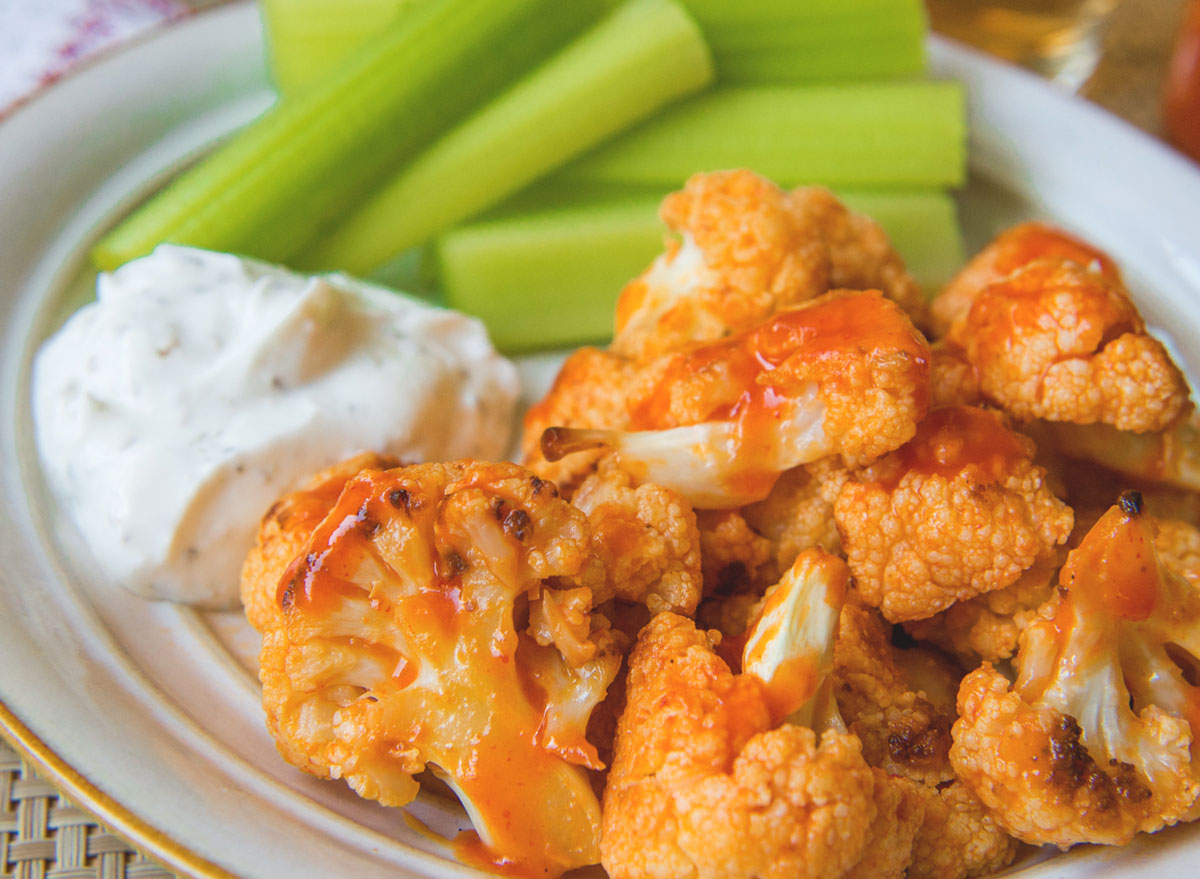
If you're considering ditching meat, dairy, and eggs, that doesn't mean you can't still have your favorite foods. Going more plant-based just gives you an opportunity to remake them in a more creative, healthy way.
"Before going plant-based, I thought I was going to have to stop eating all my favorite foods, but I quickly learned that's not the case at all," says Hilary Hinrichs, certified nutrition coach and founder of Holistic Hilary. "For example, you can make a plant-based mac and cheese sauce from a blend of cashews, carrots, potatoes, and nutritional yeast."
You can also replace the meat in your favorite dishes with plants: "There are loads of plant-based varieties, but my favorite has to be cauli-wings," adds Hinrichs; "They're filling, flavorful, and healthier than the original. Who knew eating veggies would be this fun?"
Include plant protein at every meal
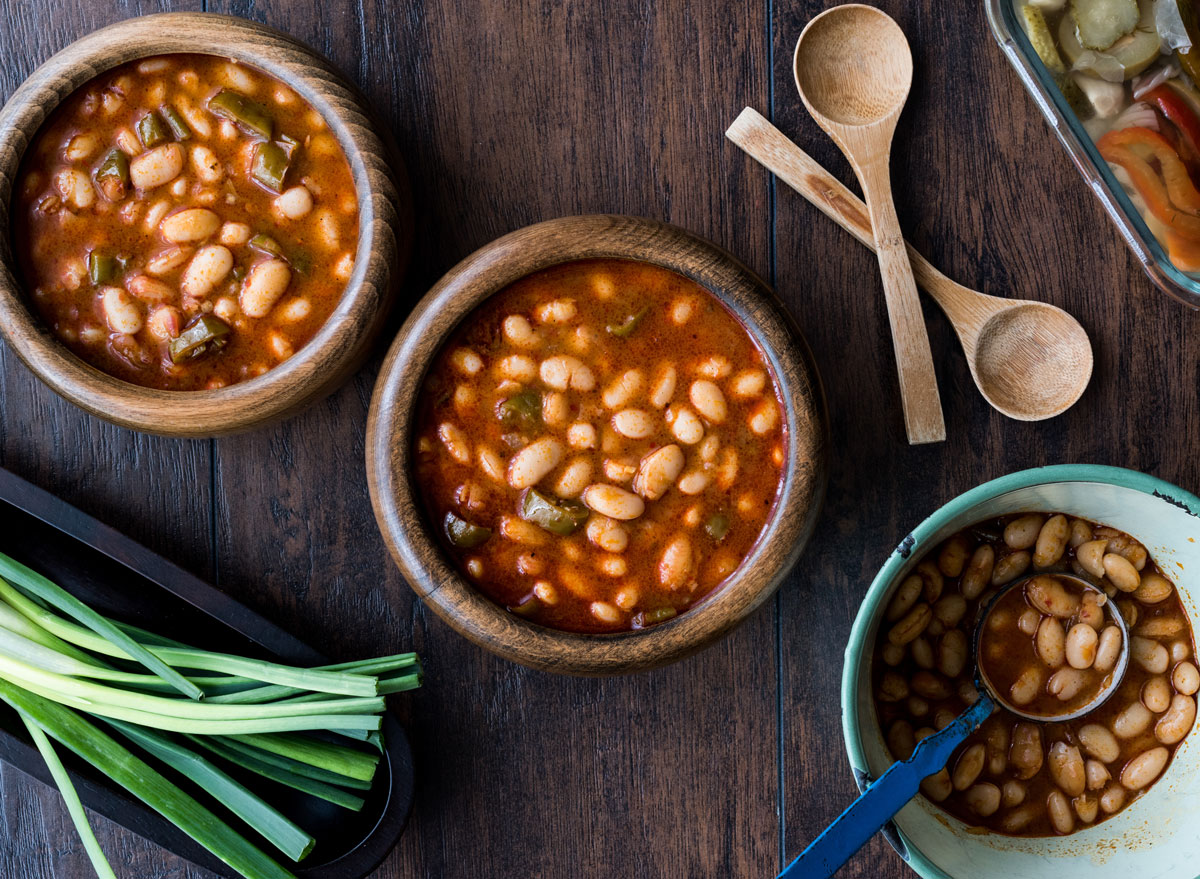
Afraid of never feeling full when you're eating mainly plants? That problem will get taken care of quickly once you begin making sure you're including a hearty plant-based protein in every dish.
"One of the fastest ways to get frustrated with a plant-based diet is to feel hangry or to have your stomach rumbling. Protein, along with healthier mono- and polyunsaturated fats and fiber, help keep you fuller for longer," Gorin says. "At every meal, be sure to include a vegetarian protein source and center your meal around it. For instance, you could mix chickpeas into pasta with veggies, make a white bean pizza, or have tofu cacciatore."
Focus on adding, not subtracting
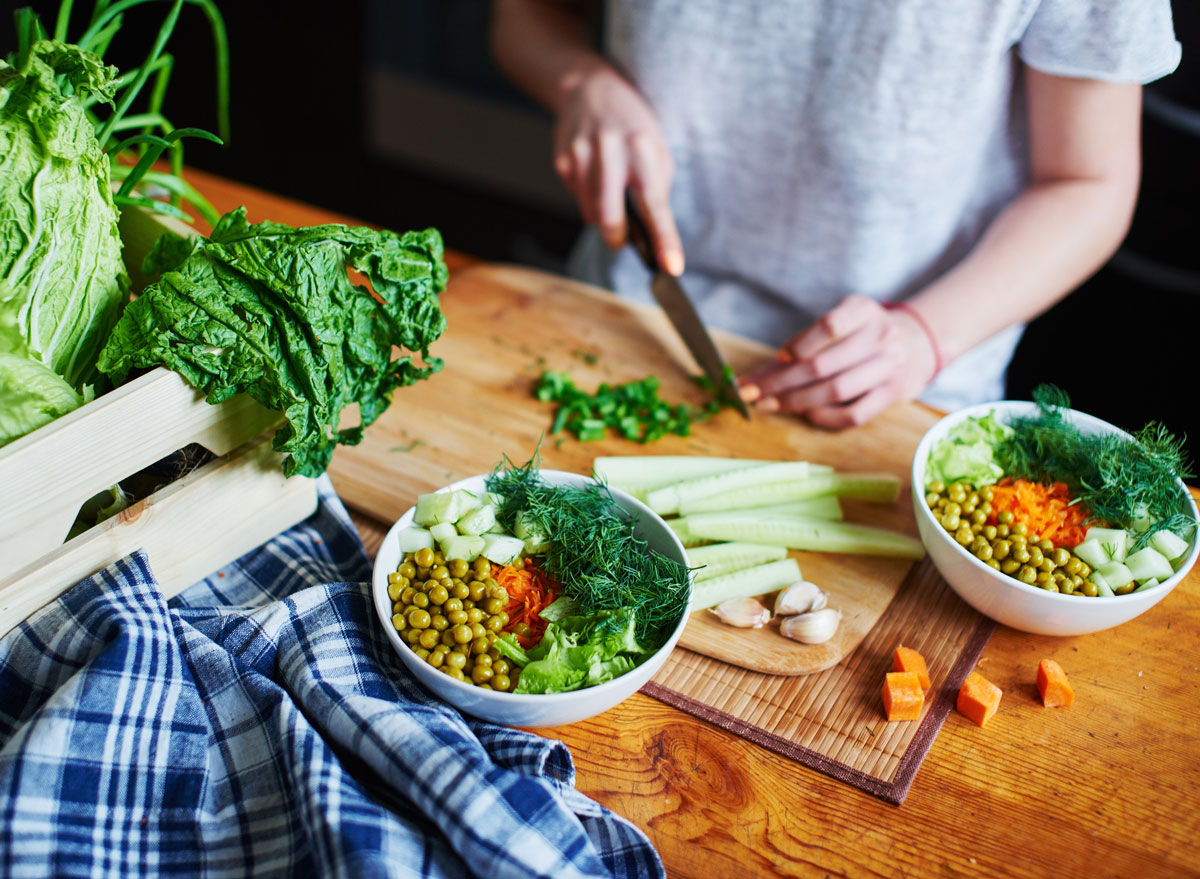
Oftentimes when thinking about starting a plant-based diet, you're left zoned in on everything you're removing from your plate. "Instead of focusing on what to subtract from your plate, focus on what you can add," English says. "There are so many different options to choose from, and you should aim to get 5 to 7 servings of fruits and vegetables per day."
The next time you're at the supermarket, spend time wandering around to spark some ideas. Go through the produce section and take note of things you haven't tried yet (or haven't eaten in years!) and explore the many grains and pasta options, types of nuts, and plant proteins like tofu, tempeh, seitan, chickpeas, and beans. The only problem will be trying to decide what to dig into first.
Make half your plate vegetables
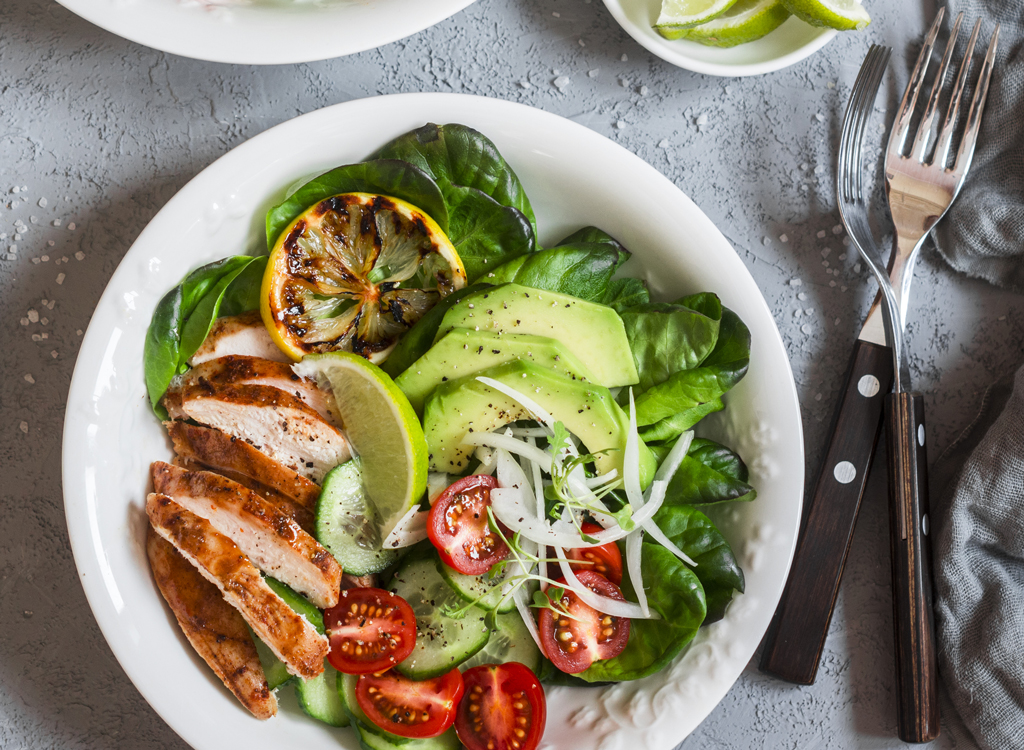
If you're trying to figure out how to arrange your plate when you're eating more plant-based, the biggest thing to keep in mind is to make sure half of it is loaded with vegetables.
"This is a great tip for anyone looking to eat more plants. Vegetables are one of the lowest-calorie plant ingredients out there and provide so many vitamins, minerals, and antioxidants," Gorin says. "Roast some lemon-garlic asparagus and pair it with tofu and wild rice. Or make a summer grain bowl with kidney beans and grilled veggies."
Learn how to cook plant protein correctly
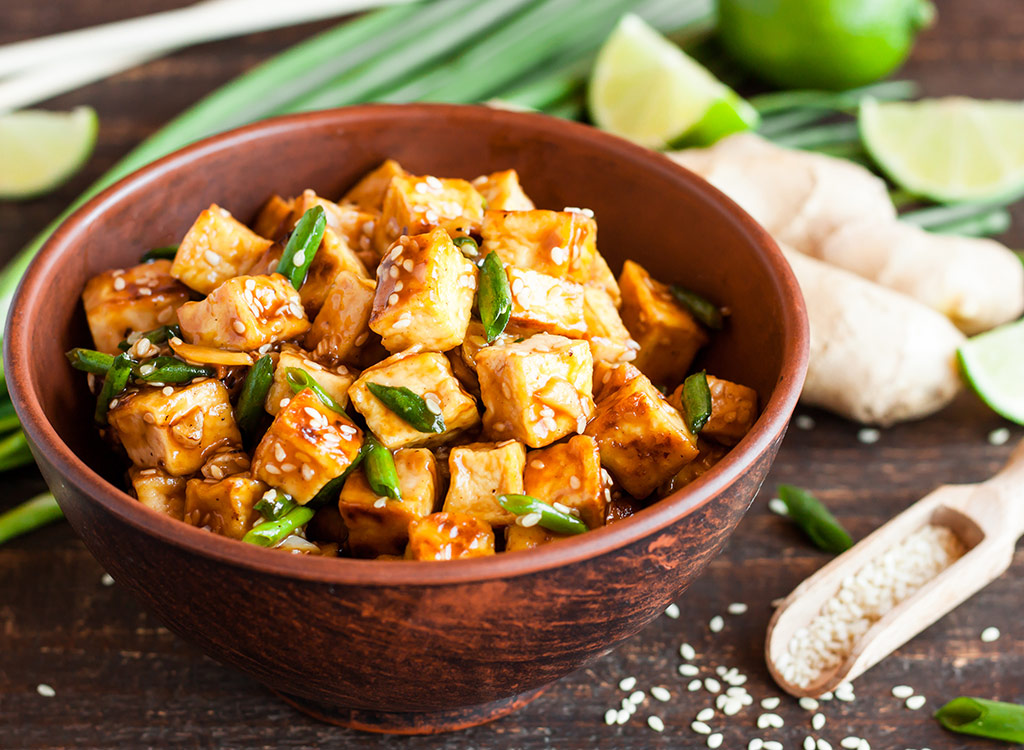
Speaking of plant protein, you're probably not going to enjoy it if you don't know how to prepare it properly. Which probably explains why you've sworn off tofu since that one time you tried it years ago when it was definitely undercooked and underseasoned.
"Something I hear more often than any other concern is not liking tofu or tempeh. But when you learn how to season them, everything changes," Hinrichs says. "The great thing about tofu, in particular, is that it's pretty flavorless, allowing you to use it many different ways. You can scramble it for a scrambled eggs-like dish and throw slices or cubes into the air-fryer or oven for crispy pieces."
No matter what your plant protein of choice is, take some time to learn how to cook and prepare it. Just like when you first learned how to cook meat to perfection, doing the same with plants is going to take some practice. Once you master it, you'll understand why people love them so much and wonder why you didn't think of becoming vegetarian years ago.
Don't be afraid to go off-menu

In your quest to become more plant-based, you might get into situations where you're not exactly sure what you should be eating or ordering. In those cases—especially when you're at a restaurant with limited options!—don't be afraid to speak up and go off-menu.
"One of the quickest things you'll learn when embracing a more plant-based diet is that you may have to order off the menu sometimes. As a vegetarian myself, I've encountered very few waiters that get upset by my requests," Gorin says. "For instance, you might ask to add hard-boiled eggs or beans to a salad for protein instead of meat. And Chinese restaurants should be able to add steamed tofu to almost any dish."Luckily there are countless vegan fast food options if you're looking to order a quick meal on the go.
Rethink the way you build your meals
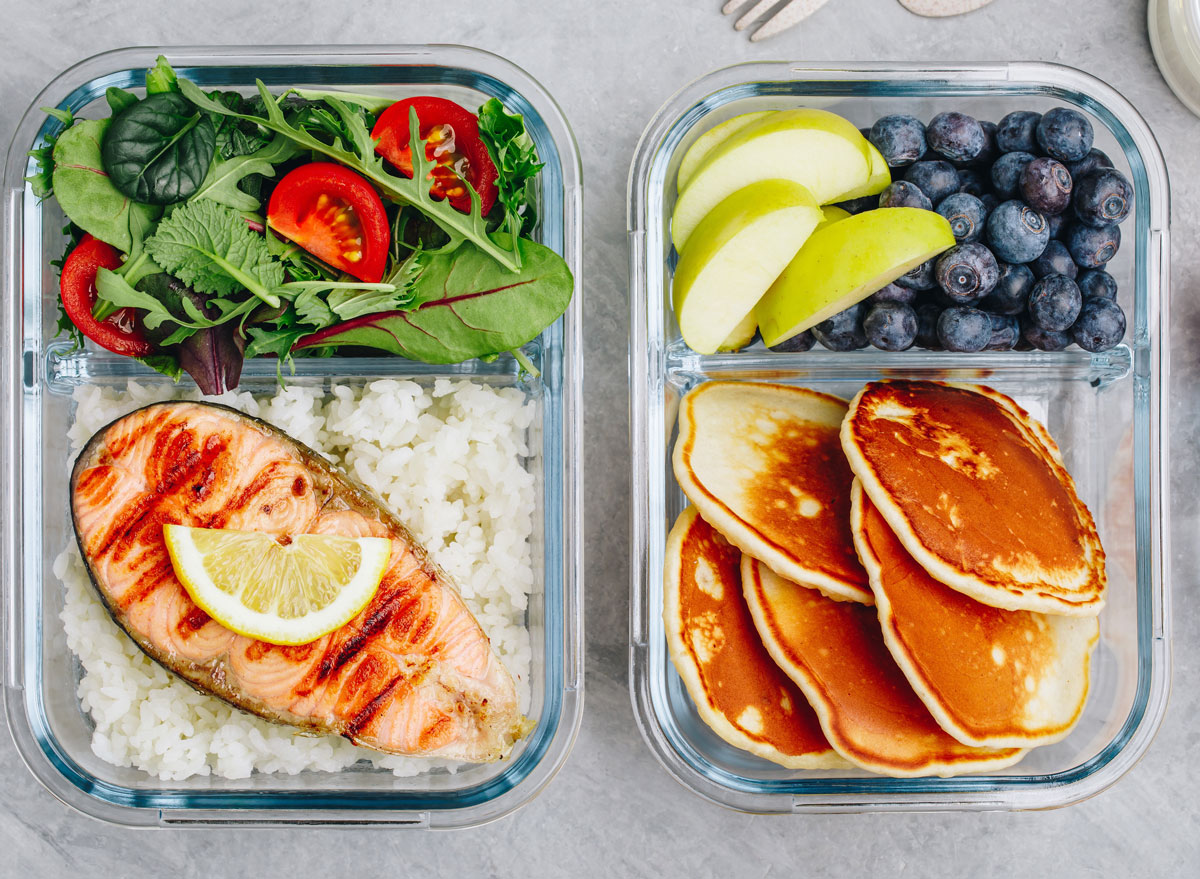
Most people grow up eating the same Standard American Diet—something based around meat, packaged and highly-processed foods, butter, high-fat dairy, eggs, and plenty of sugar. When you're following our tips for how to start a plant-based diet, know that you have to rethink the way you build your meals. It takes time for your mind to adjust, but your health will be better for it.
"Start by making meat a supporting role rather than the star of the dish," English says. "There's protein in all whole-plant foods, like legumes, nuts, and seeds—not just animal products."
Use frozen veggies
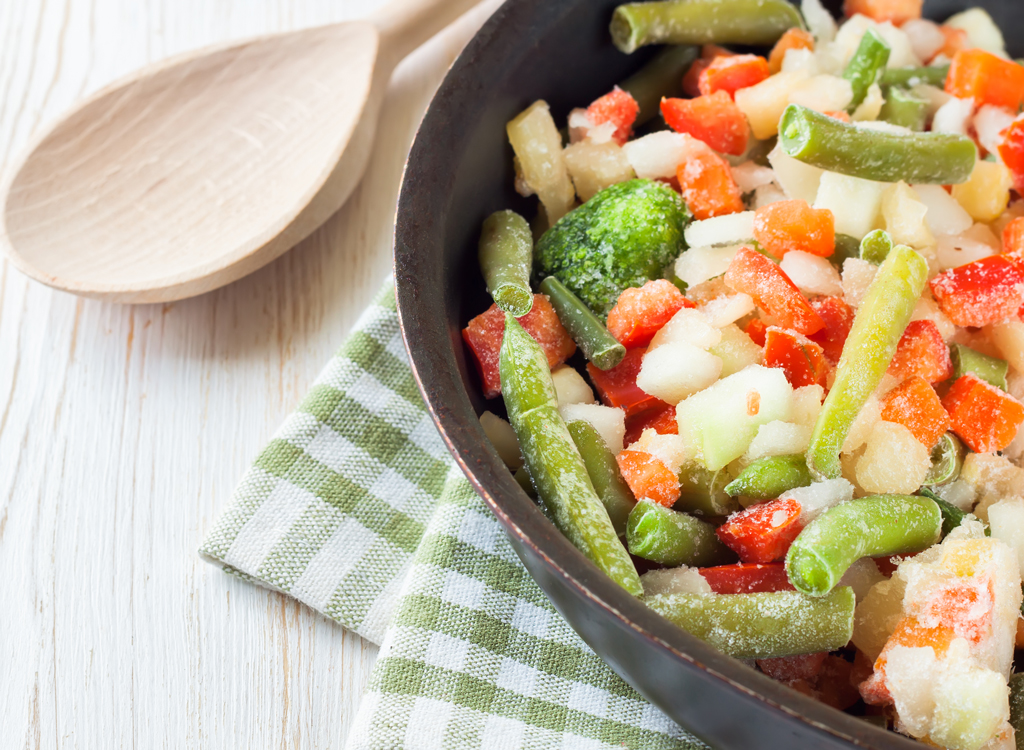
Instead of feeling like you always have to buy fresh veggies to live that #plantbased life, stock up on frozen options. They're still great for you, plus they last longer and are more affordable.
"Frozen vegetables are an amazing option when you begin transitioning into a plant-based diet for many reasons," Hinrichs says. "First, they're flash-frozen and can retain more nutrition than fresh options—especially when they're coming from a farm that's nowhere near where you buy your groceries. The longer your produce travels, the more nutrients are lost. Frozen veggies are also very convenient. They're already cut, and all you have to do is toss them into a pasta dish, serve them with rice, or add them into your smoothies."
Keep frozen fruit on hand
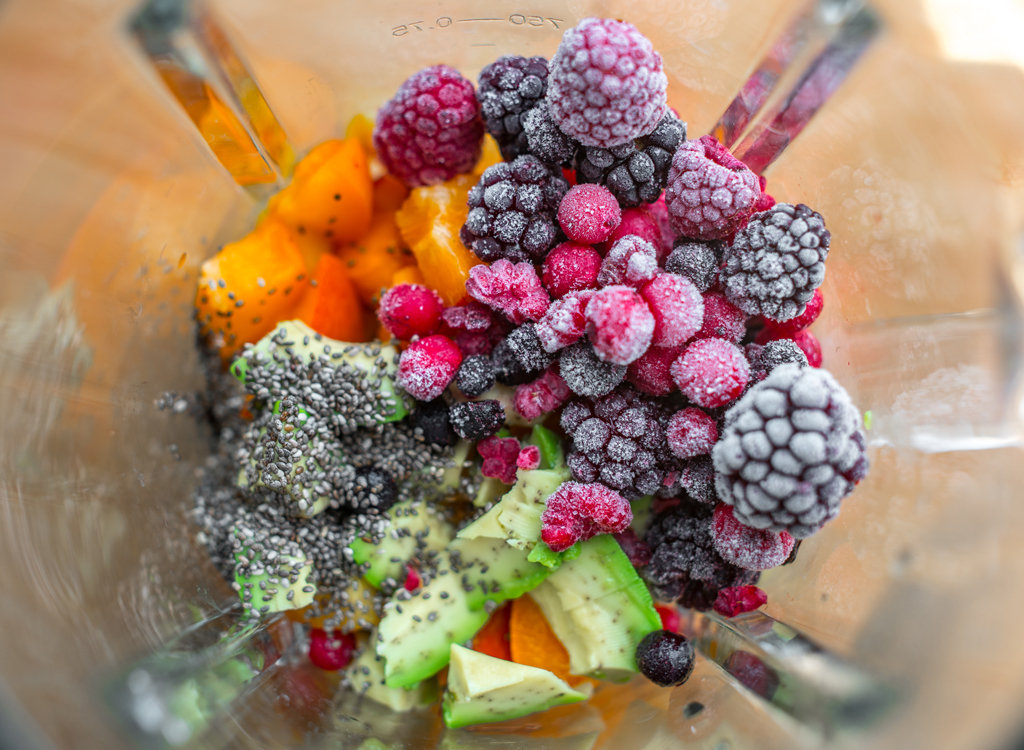
Just like veggies, buying your fruit frozen can also be an affordable and convenient way to transition into a plant-based diet. Because who wants to spend $7 on a tiny container of fresh blueberries when you can get an entire bag in the freezer section for the same price?
"Part of eating a plant-based diet is adding more plants to your meals. Not all of the produce you eat needs to be fresh, though," Gorin says. "I advise keeping several bags of unsweetened frozen fruit on hand. My favorite option is frozen wild blueberries. That's because these gems offer more health-helping antioxidants than regular blueberries and they can help with everything from boosting cognitive ability to controlling blood pressure levels. For a quick meal, I'll add them to a peanut butter or cauliflower smoothie."
Be open to experimentation
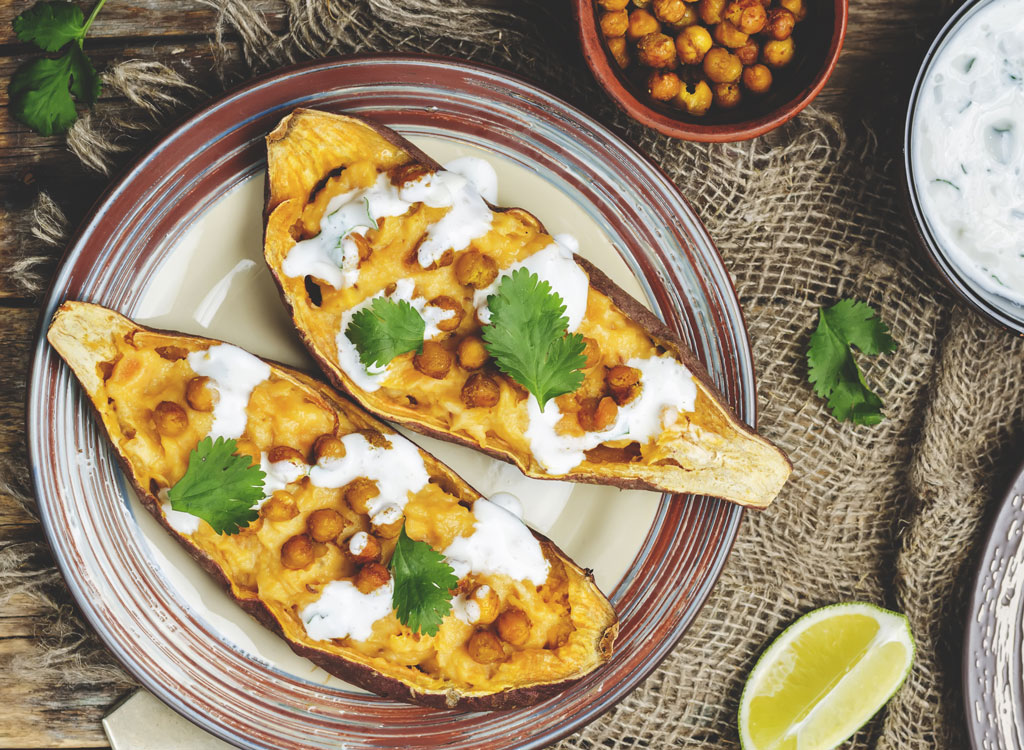
Going plant-based means being able to play with your food more than ever before. Instead of using the standard list of ingredients you grew up with, you get to step outside the box and figure out how to create dishes you love with an entirely different mindset. It's a fun challenge.
"There are so many plant-based recipes and options to try," English says. "Have fun testing out new recipes, or even try recreating your favorite dishes but in plant-based form. Also consider trying plant-based options at restaurants or ready-made options available at the grocery store."
Learn how to make veggies mouth-watering
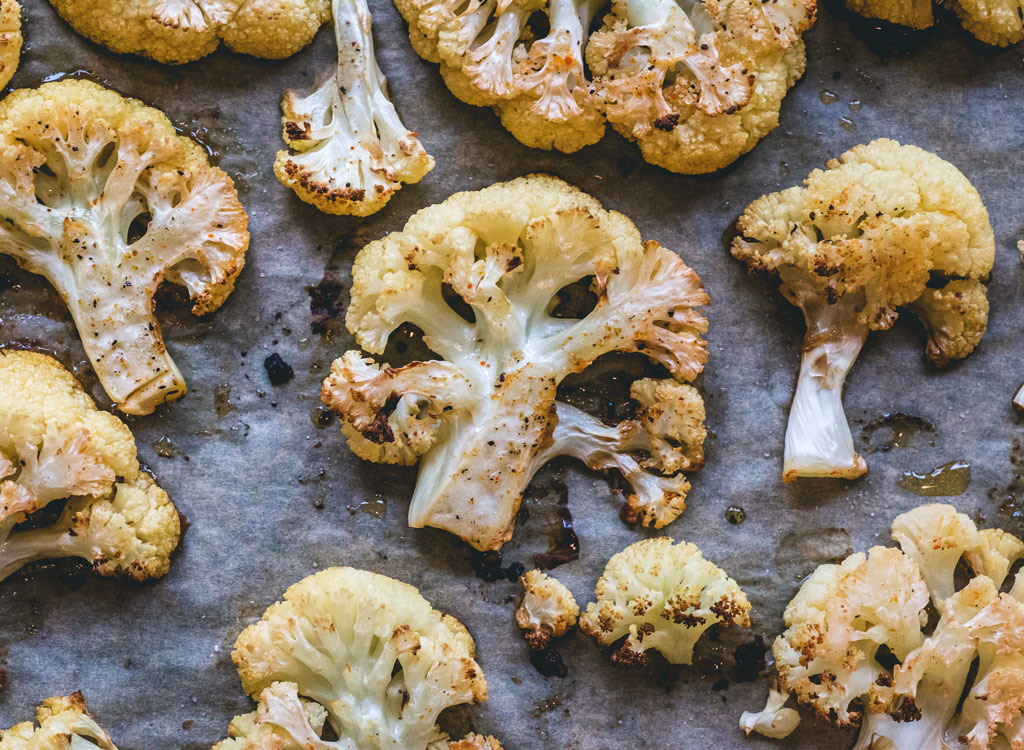
No one likes vegetables growing up—probably because, as a kid, they're typically served without all the wonderful spices and cooking techniques that make them taste so good. When you learn how to make them properly, they'll be something you crave—not something you despise.
"One of my favorite things to do is show veggie haters how amazing they can taste," Hinrichs says. "There are many methods for cooking veggies, but my favorite is definitely baking them on parchment paper and adding a little oil, salt, and pepper. Doing so creates a nice crispy outside. I also never forget to make a great sauce for my veggies. My go-to is a simple tahini-based paste."
To create the paste, Hinrichs shares her favorite recipe:
- ⅓ cup tahini
- 1 tablespoon of soy sauce or liquid aminos
- 2 to 3 tablespoons of nutritional yeast
- Pinch of sea salt
- ¼ cup of water, to thin it out
After whisking everything together in a small bowl, you can drizzle it on your veggies to up the flavor, whether they're fresh out of the oven or in a salad or bowl.
Cook with fruit juice
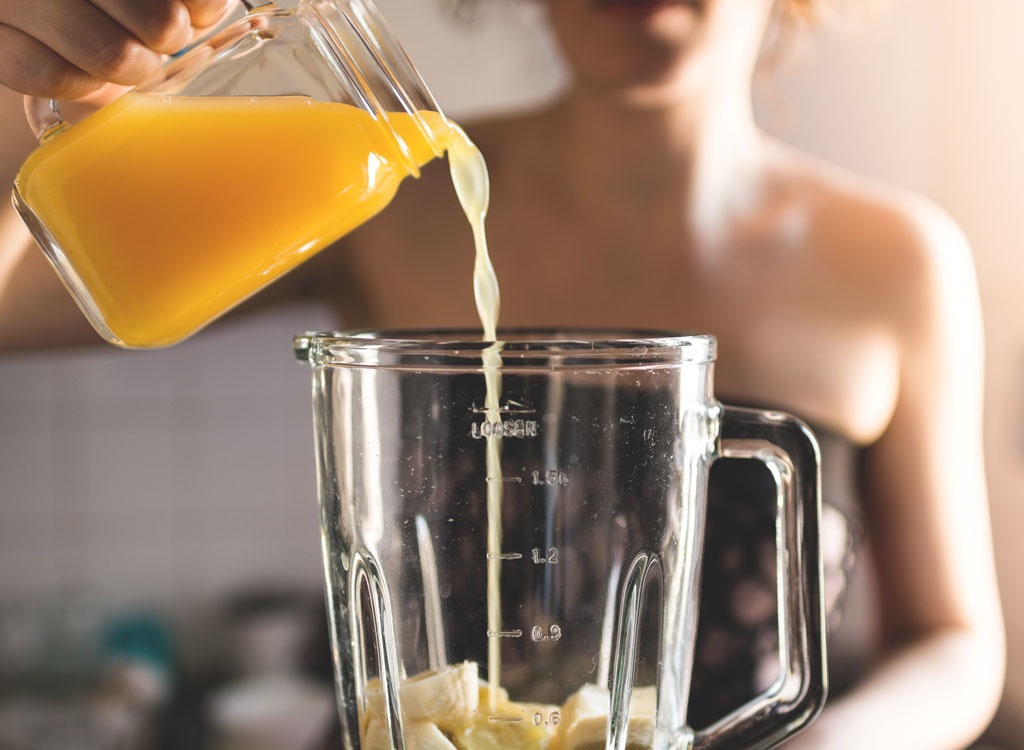
Another way to increase the flavor in plant-based dishes is to cook with fruit juice. It might sound weird, but it ups the health benefits by adding micronutrients. (It also makes you want to devour everything on your plate.)
"Adding 100 percent juice to recipes can help amp up the nutritional content of what you're eating because it provides essential vitamins and minerals, including vitamin C, potassium, folate, and magnesium," Gorin says. "I often make a healthy salad dressing using grape juice, but you can use any 100 percent fruit juice, such as orange, apple, or pomegranate. You can also sauté vegetables in juice."
Grab healthy pre-made options

On those nights you don't feel like cooking, there are plenty of healthy pre-made plant-based options at the grocery store. Some of the easiest-to-find choices come from Amy's (like the General Tso's Bowl), Sweet Earth Foods (like the Cauliflower Mac), Kashi (like the Sweet Potato Quinoa Bowl), and Gardein (like the Chick'n Florentine Frozen Skillet Meal). It's always healthier to make your own food, but at least your freezer will be be stocked with delicious options when you need them.
